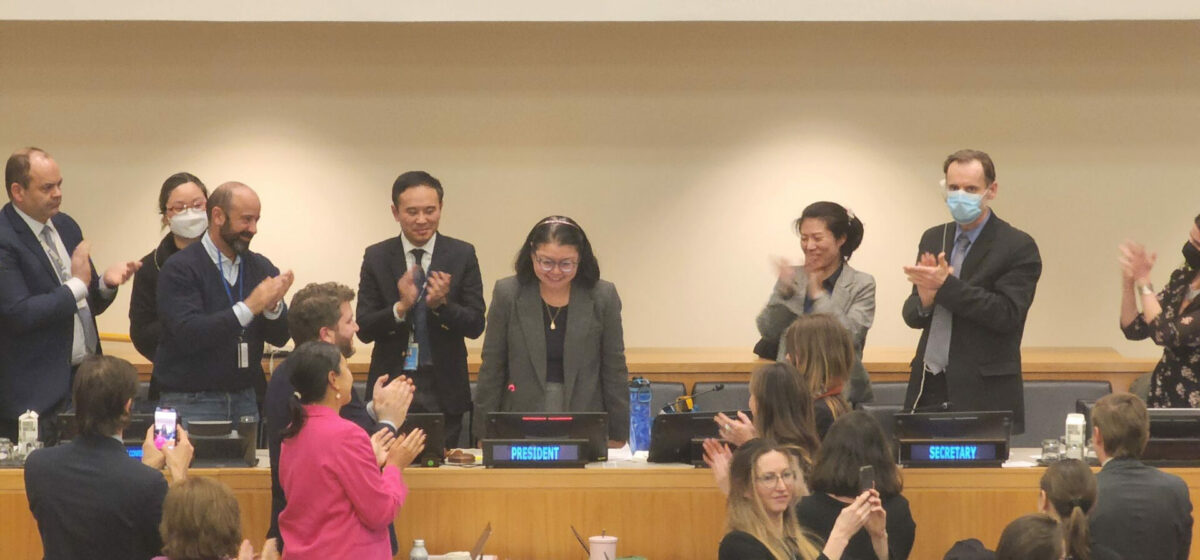UN’s Long-Awaited Breakthrough: A Triumph for Multilateralism
After nearly two decades of intense negotiations, the United Nations (UN) has achieved a remarkable milestone by adopting the world’s first treaty dedicated to safeguarding the high seas and preserving marine biodiversity in international waters. The agreement, known as the High Seas Treaty or Biodiversity Beyond National Jurisdiction (BBNJ), represents a resounding victory for multilateralism and global efforts to counter the destructive trends threatening ocean health.
A Comprehensive Agreement for Marine Conservation and Sustainability
Agreed upon by all 193 member states of the United Nations, the High Seas Treaty encompasses two-thirds of the planet’s oceans, providing crucial protection for marine ecosystems beyond national boundaries. The culmination of extensive negotiations, the treaty marks a significant step toward global cooperation in addressing the pressing challenges of climate change, biodiversity loss, and pollution.
“The ship has reached the shore,” declared Ambassador Rena Lee of Singapore, leading the negotiations, as the agreement was announced in March to an extended standing ovation & again yesterday. This momentous achievement signified a turning point in the ongoing efforts to establish a legal framework for high seas conservation.

Key Provisions for a Healthier Ocean and Sustainable Future
The High Seas Treaty, open for signatures for two years starting from September 30th after this year’s UN Sustainable Development Goals meeting, encompasses a range of essential provisions. Guided by the Kumming-Montreal Global Biodiversity Framework, it aims to protect, care for, and responsibly utilize the marine environment, preserving the integrity of ocean ecosystems and conserving the inherent value of marine biological diversity.
Cross-sectoral operations will form the backbone of the treaty’s implementation, facilitating collaboration among diverse stakeholders to address the urgent issues facing the high seas. This inclusive approach ensures that governments, civil society organisations, scientific institutions, and other key actors work together to achieve the shared goal of a sustainable and resilient ocean.
Paving the Way for Global Commitment and Action
The adoption of the High Seas Treaty is a testament to the unwavering dedication and perseverance of all member states over the course of two decades of negotiations. By reaching a consensus on this historic agreement, countries have demonstrated their collective commitment to protect and preserve marine biodiversity for present and future generations.
The treaty will be open for signatures for a two-year period following this year’s UN Sustainable Development Goals meeting, providing an opportunity for nations worldwide to endorse and contribute to this vital endeavor. It represents a significant step toward achieving the targets outlined in the 2030 Agenda for Sustainable Development, particularly Sustainable Development Goal 14, which focuses on conserving and sustainably using the ocean’s resources.
The High Seas Treaty establishes a robust legal framework to address the critical challenges facing our oceans. By committing to comprehensive marine conservation and sustainability, member states have taken a significant stride toward ensuring the responsible use of marine genetic resources and mitigating the adverse impacts of pollution, overfishing, and climate change.
This landmark achievement heralds a new era of global cooperation and stewardship, fostering a healthier, more resilient, and productive ocean for the benefit of humanity and the preservation of our planet’s natural heritage. The High Seas Treaty serves as a testament to the power of multilateralism and sets a precedent for addressing global challenges through collective action and collaboration.












